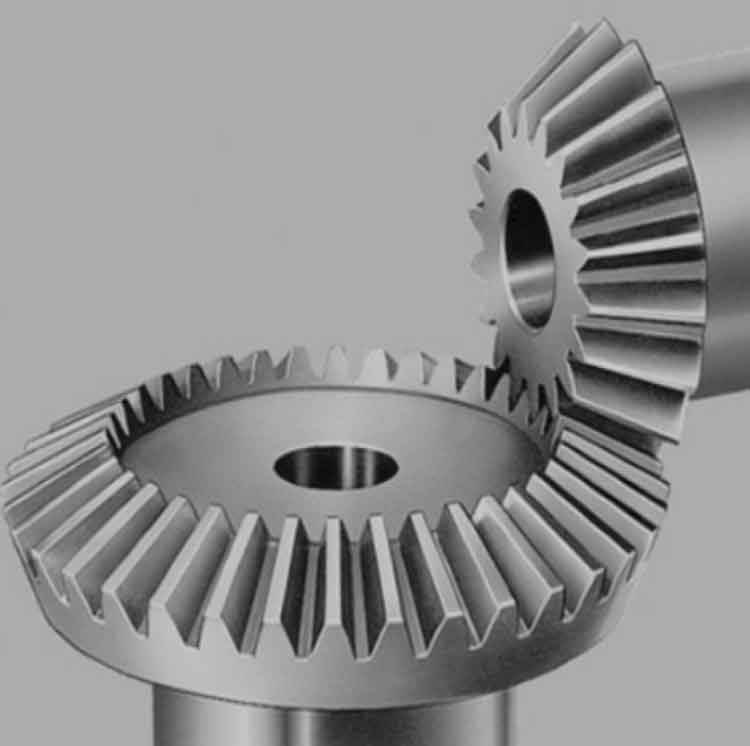Customizing straight bevel gears for specialized engineering applications allows industries to address unique requirements, optimize performance, and meet specific design criteria. Here are key considerations for customizing straight bevel gears:

1. Gear Geometry and Tooth Profile:
Customized straight bevel gears can have specific tooth profiles and geometries tailored to the application’s load requirements, speed ratios, and torque transmission. The design may involve modifying the number of teeth, pitch, pressure angle, and tooth thickness to optimize gear meshing and load distribution.
2. Material Selection:
Choosing the right material is crucial for specialized applications. Different materials, such as alloy steels, stainless steels, and special alloys, can be selected based on factors like strength, wear resistance, corrosion resistance, and temperature resistance.
3. Heat Treatment:
Customized straight bevel gears may require specific heat treatment processes to enhance hardness, toughness, and wear resistance. Heat treatment techniques like carburizing, quenching, and tempering can be utilized to achieve the desired material properties.
4. Surface Coatings and Treatments:
In certain applications, specialized surface coatings or treatments may be applied to improve gear performance. Coatings such as nitriding or diamond-like carbon (DLC) can enhance wear resistance and reduce friction.
5. Noise Reduction Features:
Customized straight bevel gears can incorporate noise reduction features to meet specific noise requirements in noise-sensitive applications. Modifications to the gear geometry, tooth profiles, or material selection can reduce gear noise during operation.
6. Bearing and Shaft Requirements:
The design of customized straight bevel gears may include considerations for the required bearings and shafts. The compatibility of the gear with the mating components is crucial to ensure optimal performance.
7. Application-Specific Load Distribution:
Specialized applications may require unique load distribution characteristics. Customizing the gear’s tooth profile and thickness can ensure even load distribution across the gear teeth and prevent premature wear.
8. Environmental Factors:
Customized straight bevel gears can be designed to withstand specific environmental factors such as temperature extremes, moisture, and chemical exposure. Proper sealing and protection may be incorporated into the design.
9. Industry Standards and Regulations:
When customizing straight bevel gears for specialized applications, it’s essential to consider industry standards and regulations, especially in safety-critical applications like aerospace or medical equipment.
10. Simulation and Prototyping:
Using advanced simulation tools and prototyping techniques can help validate the design before full-scale production. Prototyping allows engineers to test the gear’s performance under real-world conditions and make necessary adjustments.
11. Collaboration with Gear Manufacturers:
Collaborating with experienced gear manufacturers or suppliers is crucial for successful customization. These manufacturers have the expertise to design, engineer, and produce gears that meet the exact requirements of specialized applications.
Customizing straight bevel gears for specialized engineering applications involves a detailed understanding of the application’s requirements, selecting appropriate materials and manufacturing processes, and leveraging advanced design and simulation tools. By tailoring gears to meet specific demands, industries can achieve optimal performance, reliability, and efficiency in their gear systems.
